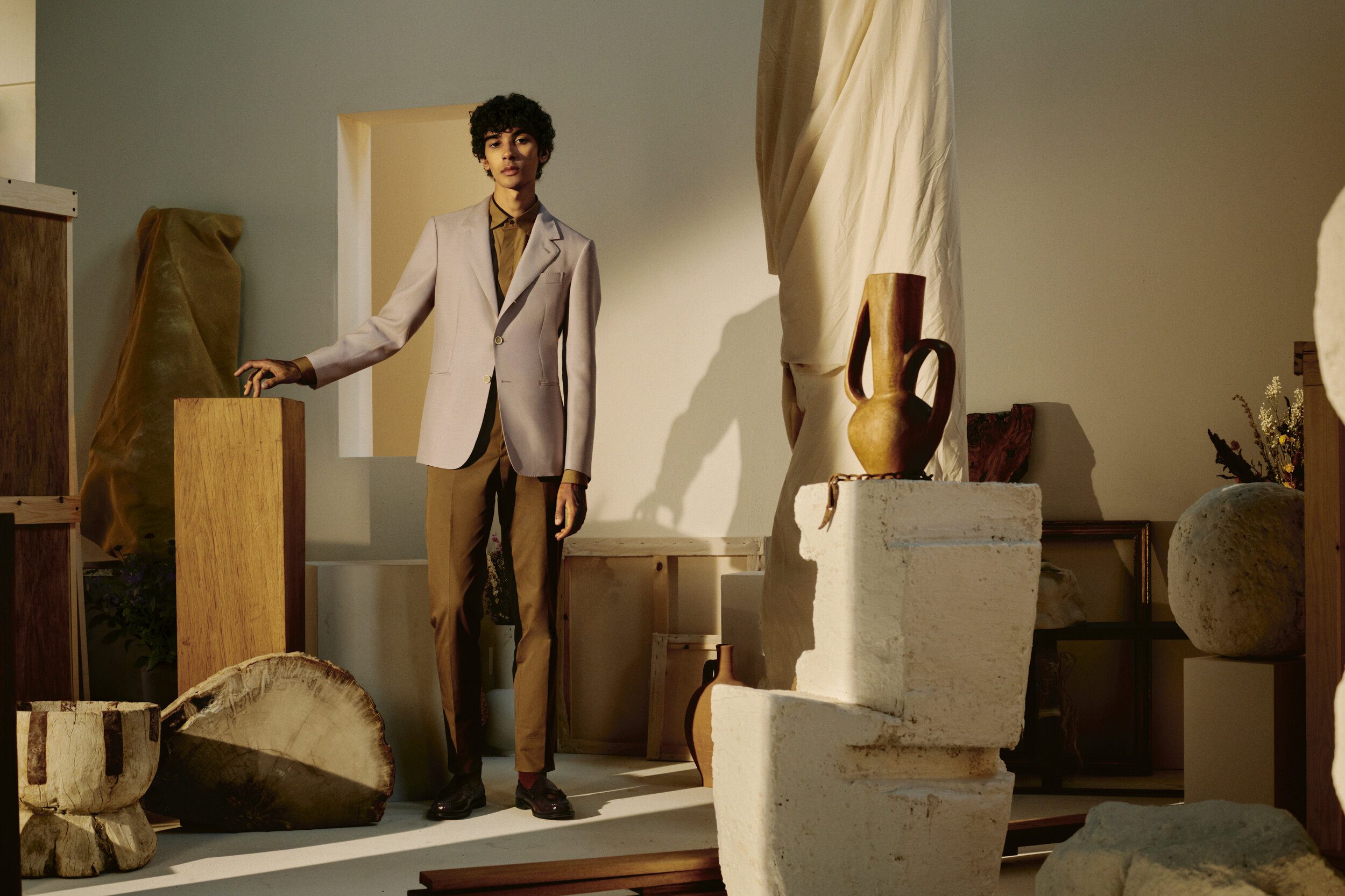Colour Psychology: How To Dress To Attract Others & Boost Your Mood
Everyone experiences colour a little differently, whether that’s due to cultural viewpoints or personal perspectives. There are, however, some universal interpretations of specific colours. Red makes us competitive, for example. Green calms us down. If it sounds like something a paint company came up with, know that the relation between colour and emotion has been studied empirically and theoretically since at least 1810.
The effect colour has on our mood and feelings is hard to dispute. Theories surrounding wave-length and colour ‘warmth’ have been posited, prompting research in different areas – from the investigation of blood-red causing aggression in animals to the idea that certain paint colours make a bathroom feel calming.
The same thinking can be applied to the colour of the clothes you wear and the feelings and behaviours they elicit.
Colour, Clothing And Mental Health
It’s possible to boost your mood with clothes, and we’re not just talking about the buzz you get from a new jacket. Changing the colour of your clothes may not be a magical fix, but it can help cheer you up or make you feel more confident.
Since certain colours are associated with positive feelings, donning those may positively impact your mental health. The same can be said for food brands using colours that make you hungry or spas painting their walls in calming, toned-down hues.
Attraction, First Impressions and Self-Confidence
Life is full of situations in which you want to make a good impression, and there are traditional colours you associate with them. For example:
- Traditional job interviews – black and/or white
- Creative professional interviews – bright colours
- First dates – pink or red
- Attending weddings – anything but white or black
Important events and crucial first impressions aside, you also wear colour every day, so daily splashes of colour theory in your clothing may help with your self-confidence. Certain colours may even make you more attractive to others, such as colours that go well with your skin tone or complementary colours in an outfit.
The point is, if the colour palette of your clothing is well considered, it will only reflect positively on you. Here’s a who’s hue of the colours you need in your rotation.
White
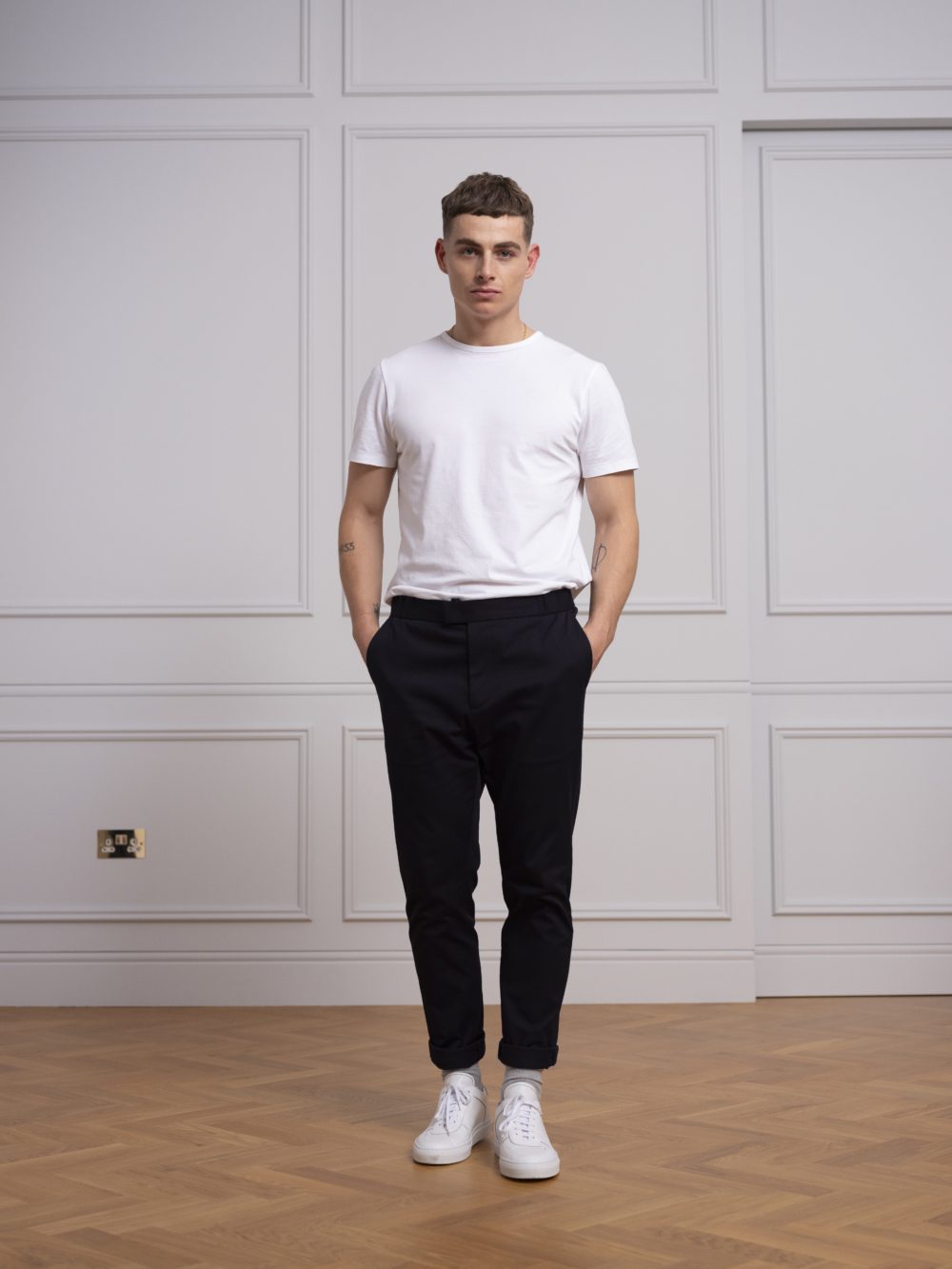
White is one of those colours that sticks out in an outfit. For example, the white t-shirt is a staple in almost everyone’s wardrobe. You could even opt for a statement monochromatic white look. When you wear white, this typically conveys that you are:
- Clean and put-together
- Cool and collected
- Innocent and pure
- Elegant and sleek
- Professional and successful
It also suggests you’re very careful with ketchup. Of course, cultural and personal differences may change these perceptions. For instance, some cultures view white as associated with death while some view it as a symbol of life. There are even people who will tell you not to wear white after Labour Day – based on practicality and the holiday date that is observed in the US rather than the UK.
Some people just find white to be a boring or empty colour due to personal preference. In more general situations, however, white is a good style choice for job interviews, investor meetings, medical presentations and any events that represent starting anew.
Black
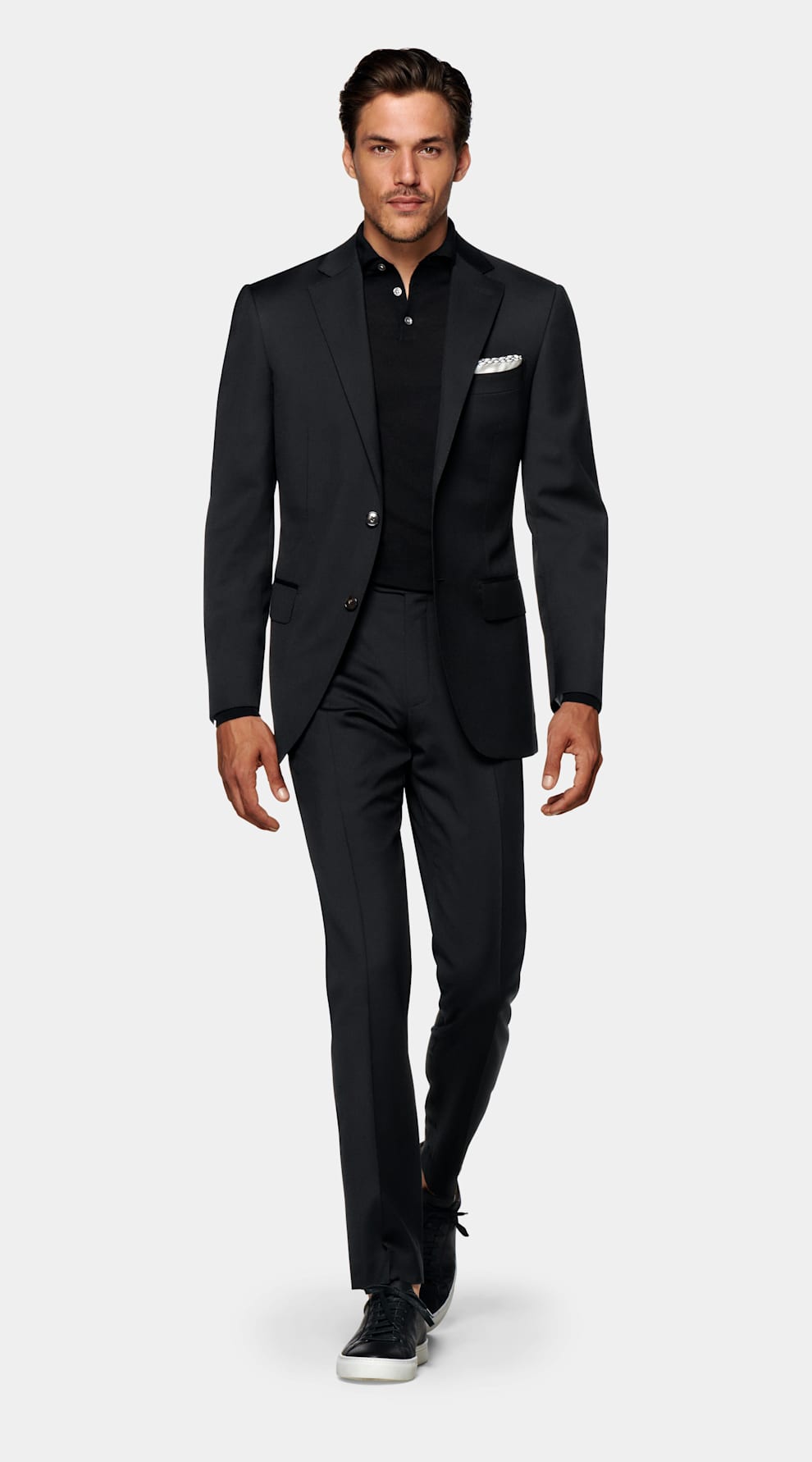
It’s well-known that black is a slimming colour, but using it in your wardrobe often expresses more than just a trim figure. Whether you opt for classic black jeans or an all-black outfit, this dark hue speaks volumes about your lifestyle. People that wear solid black tend to have a more minimalist wardrobe and, therefore, are usually seen as more practical. Again, cultural differences abound when it comes to wearing black, but generally, black may make you appear:
- Bold and authoritative
- Serious and strong
- Classic and practical
- Edgy and rebellious
- Gothic and morose
The vibe you give off when wearing black depends on how you choose to style it and the context in which you wear it. If you’re in a crisp black suit (and assuming it fits well), you might simply appear well-dressed. If that same suit is worn at a funeral, it may show respect and grief.
Depending on what black means to you, it could make you happy when you pair a spiked, black denim jacket with your favourite black Dr. Martens boots. As one of the most versatile colours out there, you can’t go wrong with black – unless you don’t own a lint roller.
Red
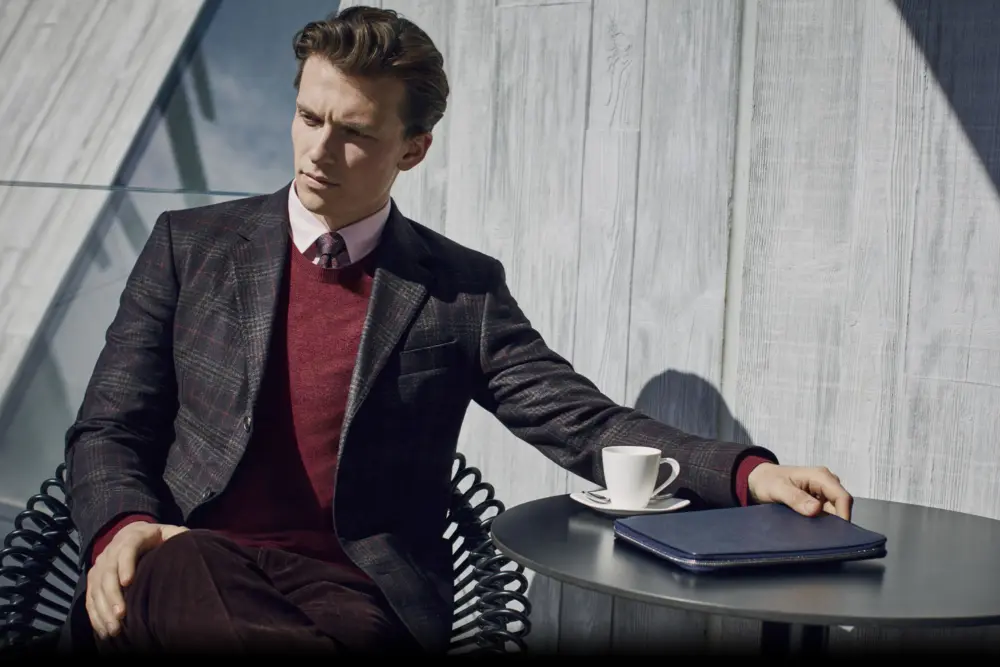
The colour of blood and roses, red is a hue that evokes intense emotions. If you want to feel more lustful or be lusted after, it may be the choice for you. Wearing a bright shade of crimson may boost your confidence. This doesn’t necessarily have to be about romance – red is also known to promote action, even speeding up the heart rate and enhancing energy. Wearing red may make you seem:
- Physically attractive and desirable
- Assertive and goal-oriented
- Aggressive
- Attention-seeking and bold
Animals often react to red aggressively, compelled by either instinct or learned behaviours when seeing blood. Animals aren’t too different from humans, so some of these physical reactions may still happen at the sight of the colour red. The interesting juxtaposition between aggression and physical attraction is due to the similar nature of the physiological responses to each. Wear red to make an impression on a date or to stick out in a crowd.
Other Clothing Colours
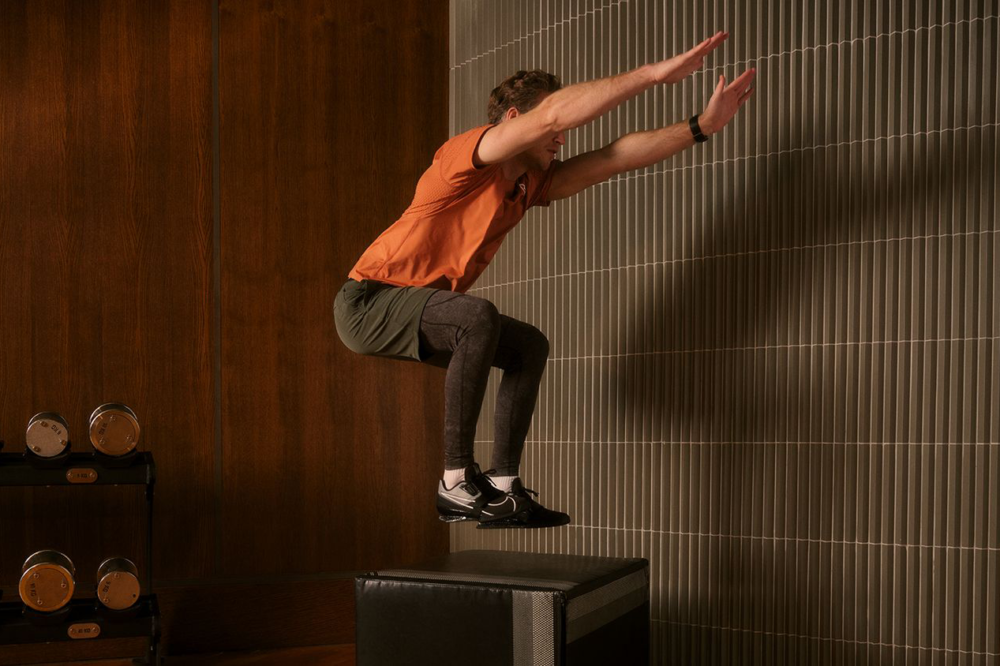
There are endless colour combinations and variations of hues. Other basic colours to consider when dressing to change your mood or influence others around you include:
- Orange — for excitement, energy and invigoration
- Yellow — for happiness, critical thinking and agitation (if overused)
- Green — for growth, eco-friendliness and sustainability
- Blue — for calmness, serenity and safety
- Purple — for nobility, power and wisdom
- Pink — for kindness, softness or stimulation (if hot pink)
Keep in mind that the brightness or shade of the colour may alter the way it makes you and others feel. The best way to determine how certain colours will affect your mood and relationships is to test them out. Try a denim-on-denim look to test out the effects of blue – but keep in mind that some people may just dislike that particular style and, therefore, have negative feelings towards it. Try wearing calming tones, like sage green, when working from home to see if it helps combat stress.
There’s no wrong way to experiment with clothing colour. Check out a colour wheel and find the colours opposite to each other if you want to wear complementary colours. If you’re feeling particularly creative, step outside of your comfort zone and pair colours that don’t fall under this category – such as red and pink. In any case, pay attention to the colours you’re wearing and what happens that day. Maybe you’ve been ignoring that lilac shirt for too long.
